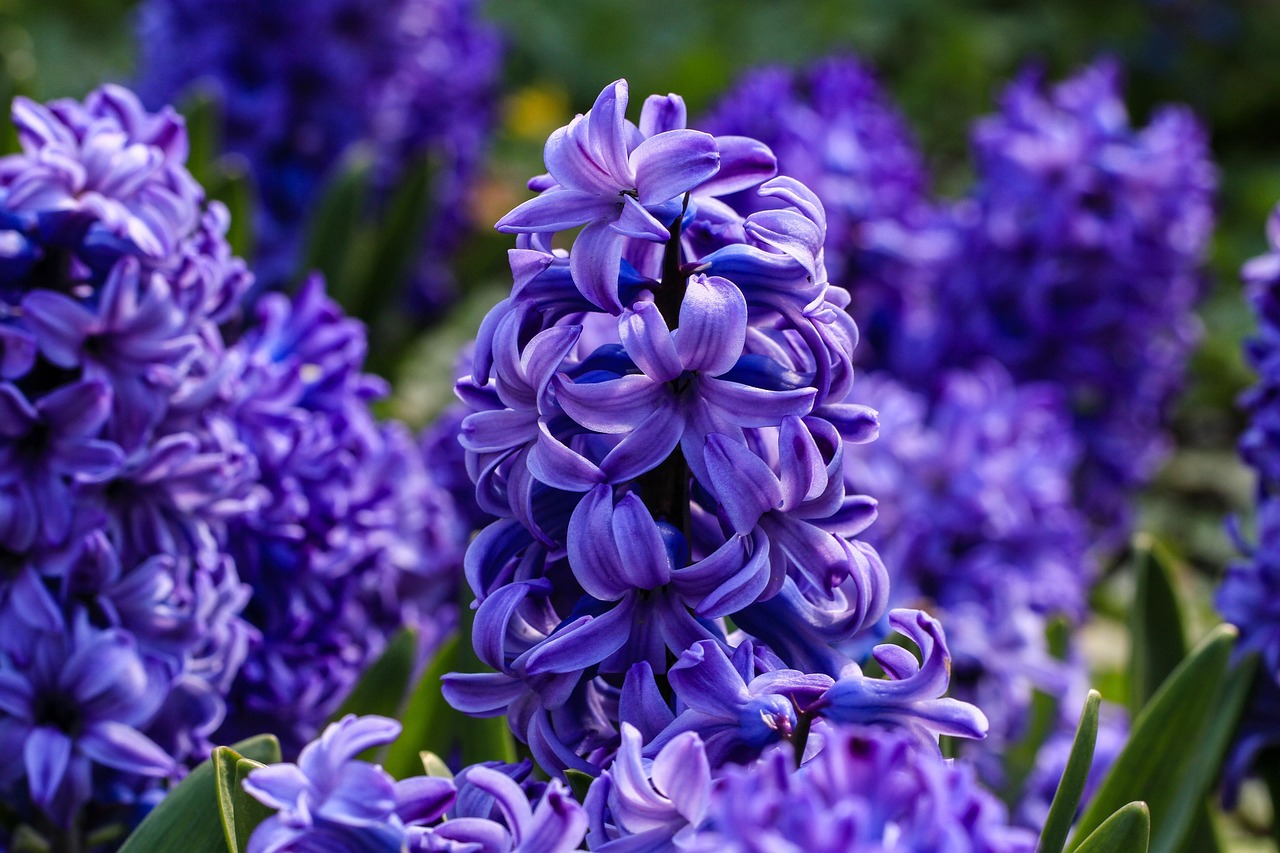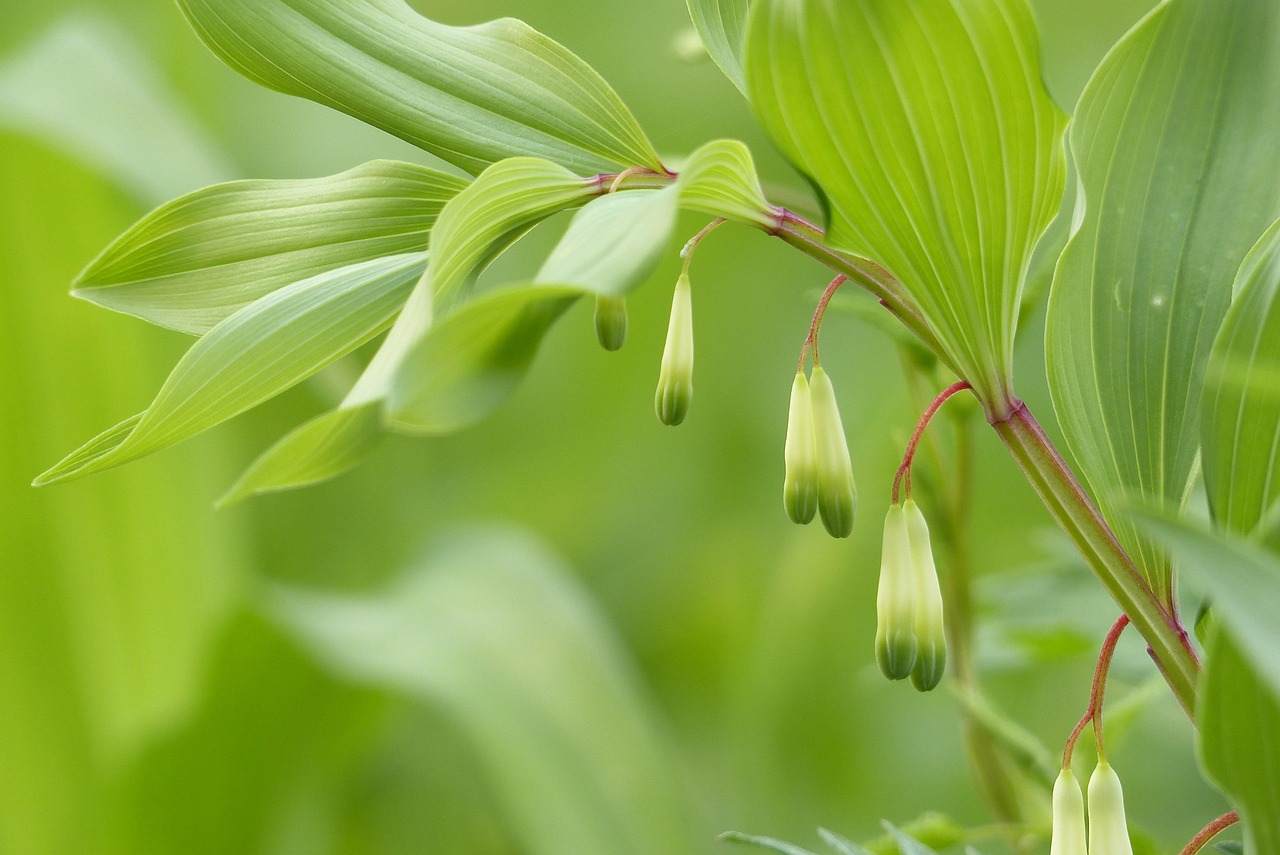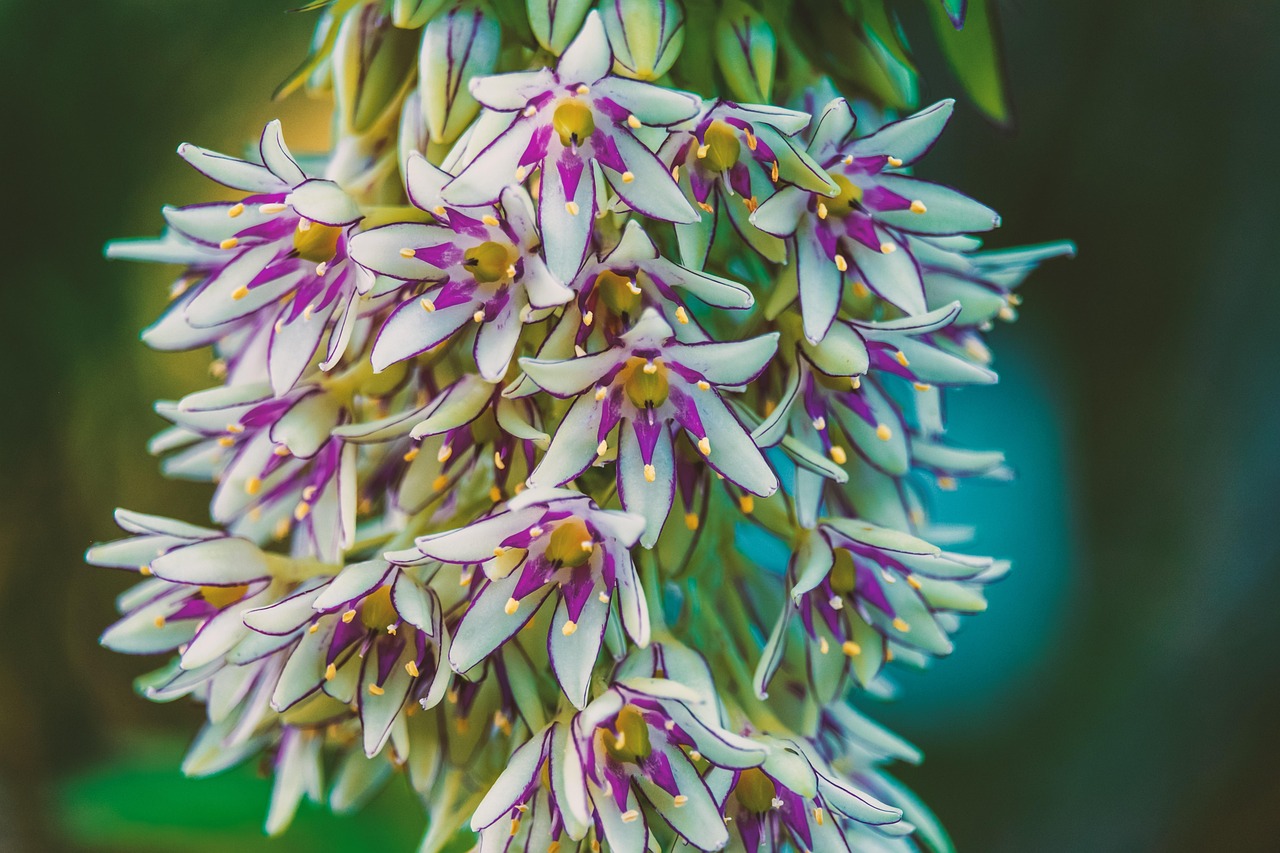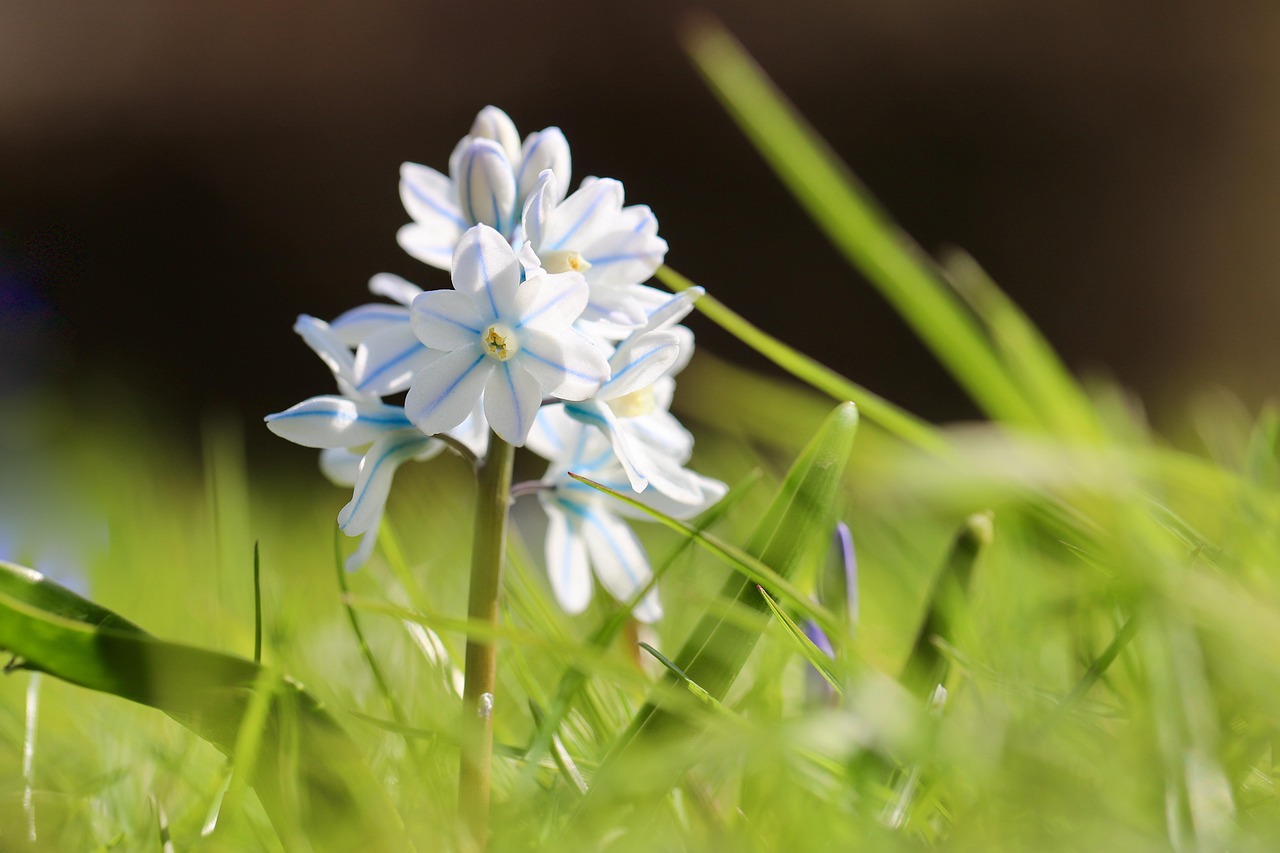Star of Bethlehem | A Quiet Light Blooming in European Monasteries
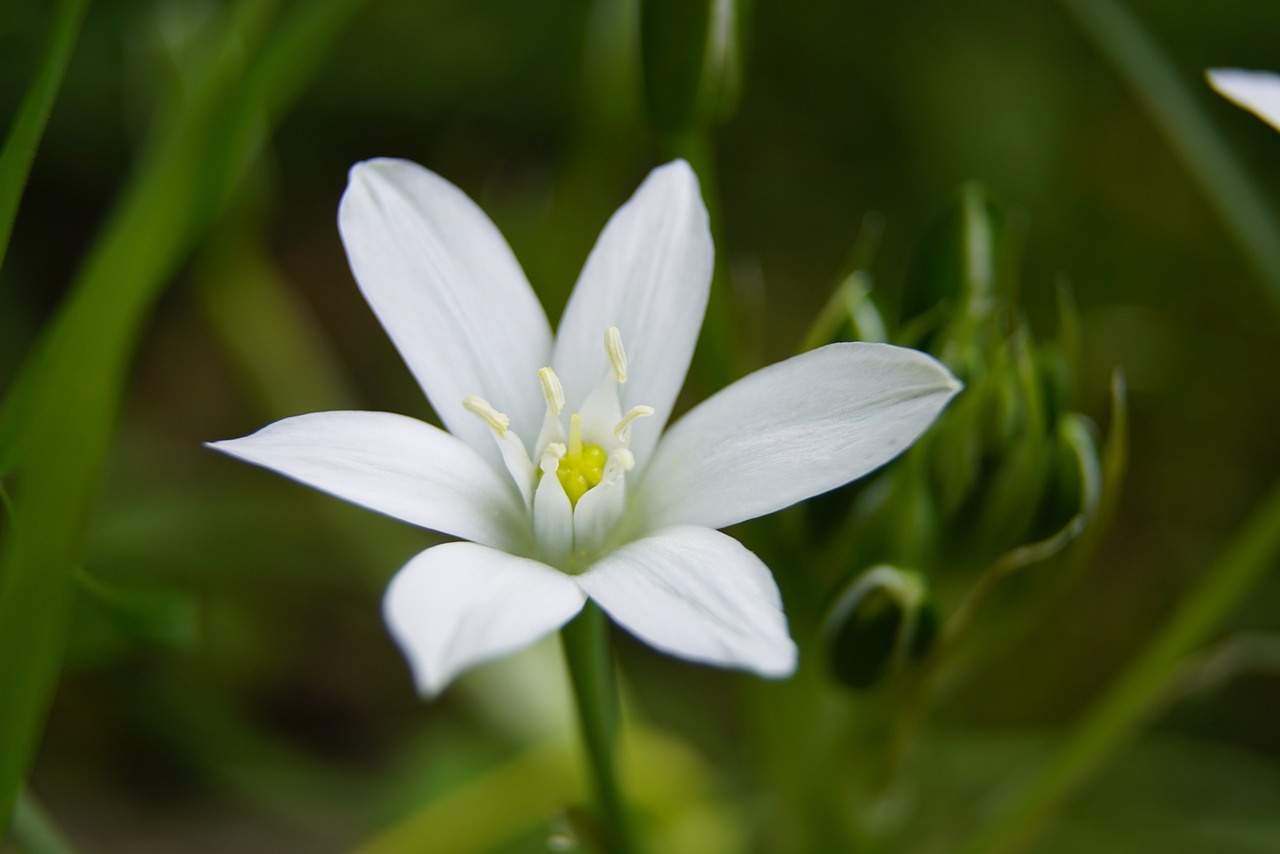
The Star of Bethlehem is a bulbous plant that produces star-shaped white flowers in early spring, admired for its pure and delicate charm.
When grown in clusters, it creates landscapes resembling flower meadows, and it is also valued as ground cover in gardens and parks.
In this article, I will explain in detail the basic information, cultural and historical background, and cultivation methods of the Star of Bethlehem.
Basic Information
- Scientific Name: Ornithogalum umbellatum
- Family: Asparagaceae
- Origin: Europe, Mediterranean coastal regions
- Appearance: From among slender leaves, flower stalks rise to bear pure white star-shaped blossoms. On the reverse side of the petals, faint green lines appear, giving the flowers an elegant impression. The leaves spread close to the ground, and the flowers bloom at a height of about 10–20 cm.
- Blooming Season: April–May
Cultural Characteristics Around the World
The Star of Bethlehem has long been cherished, especially in Europe, as a garden plant admired for its graceful appearance and scenic beauty when planted in groups.
In the United Kingdom and Germany, it is regarded as one of the plants that herald spring, and it is often planted in parks and cemeteries.
Because it blooms ahead of many other plants in early spring, it is valued in garden design as a symbol of seasonal transition and as a plant that enhances natural landscapes.
It is also used in wedding decorations, where its pure white flowers create an atmosphere of purity.
In recent years, with the rising popularity of natural gardens, it has been reappreciated across Europe as a plant for enjoying the beauty of mass blooming.
Historical Episodes
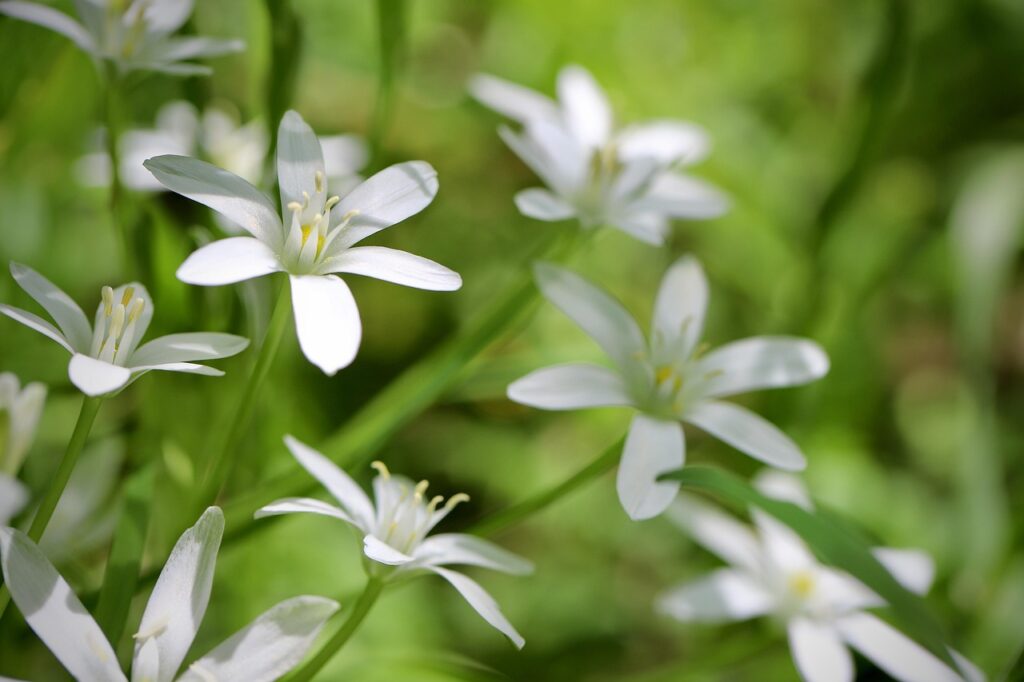
The Star of Bethlehem was already known in ancient Roman times, spreading naturally as a wild plant in the Mediterranean region.
During the Middle Ages, it was planted in monastery gardens, where monks valued it as a herald of spring.
From the 17th century onward, cultivation as an ornamental bulb plant progressed under the care of horticulturists in England and the Netherlands, leading to its wide popularity as a decorative flower.
In the Netherlands, it was known alongside tulips as a plant that brightened spring flower beds.
In the 19th century, many varieties were introduced from Europe to North America, where they were planted in city parks and botanical gardens.
Today, the plant has naturalized in many regions, including Europe and the United States, and is loved as a symbol of spring.
Gardening Advice
The Star of Bethlehem is relatively easy to grow and propagates naturally, making it ideal for enjoying clusters of blooms.
Sunlight
Prefers sunny locations. It also grows in partial shade, though flowering may be reduced.
Watering
Moderately drought-tolerant. After planting, avoid excessive moisture. Ensure the soil does not dry out completely until the bulbs establish roots.
Soil
Well-drained sandy soil is ideal. In damp areas, bulbs may rot; raised beds or mounding are recommended.
Fertilizer
Minimal fertilizer is sufficient. Applying slow-release fertilizer after flowering helps stabilize blooming the following year.
Planting
Plant bulbs in autumn at a depth of 3–5 cm, spacing them about 10 cm apart for best massing effects.
Propagation
Bulbs multiply naturally after flowering. Divide and replant every few years to maintain planting balance.
Conclusion
The Star of Bethlehem is a striking bulbous plant that announces the arrival of spring with its pure white flowers.
Known since ancient Roman times and planted in monastery gardens during the Middle Ages, it has been cultivated as an ornamental plant since the 17th century.
Today, it is beloved in Europe, the United States, and beyond for its natural ability to spread and for the beauty of its clustered blooms.
As a plant that quietly colors spring landscapes, it continues to be cherished by many.

